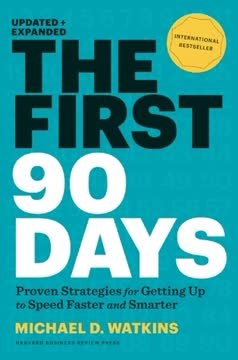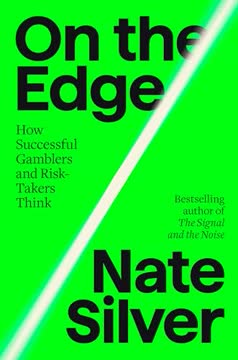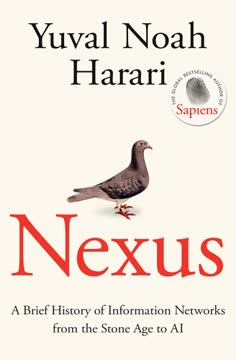重点摘要
1. 创新是一个有纪律的过程,而不是天才的随机行为
创新是企业家精神的特定功能,无论是在现有企业、公共服务机构,还是在家庭厨房中由个人启动的新企业。
系统化方法:创新不是等待灵感的闪现,而是一个有意图和有条理的过程。成功的企业家致力于这种系统化的实践,不断寻找机会,以改变企业的经济或社会潜力。
打破神话:所谓的“企业家个性”大多是一个神话。许多成功的企业家并不符合这种模式,而许多具有所谓企业家特质的人却从未成功创新。真正让创新者与众不同的是他们对创新的有纪律的实践的奉献。
关键要素:这种有纪律的方法包括:
- 持续分析商业环境中的机会
- 开发一个结构化的过程来评估和追求想法
- 创建支持和培养组织内创新的系统
- 定期测量和改进创新努力
2. 成功的创新者系统地分析七个机会来源
公司或行业内有四个这样的机会领域:意外事件、不一致性、过程需求以及行业和市场变化。
内部机会:在公司或行业内,创新者寻找:
- 意外事件:与预期不符的惊喜、失败或成功
- 不一致性:现实与假设之间的差异
- 过程需求:现有过程中的低效或缺口
- 行业和市场变化:行业结构或市场动态的变化
外部机会:在更广泛的环境中,创新者分析:
- 人口变化:人口、年龄分布、教育等的变化
- 观念变化:人们如何看待和解释情况
- 新知识:科学、技术或社会突破
通过系统地检查这七个领域,创新者增加了识别其他人可能错过的宝贵机会的机会。这种结构化的方法有助于将创新从一种碰运气的活动转变为更可预测和可管理的过程。
3. 创新需要概念和感知技能
成功的创新者使用大脑的左右两侧。他们通过分析确定创新必须满足的机会,然后去观察潜在用户,研究他们的期望、价值观和需求。
分析思维:创新者必须严格分析机会、市场条件和潜在解决方案。这包括:
- 收集和解释数据
- 识别模式和趋势
- 评估想法的可行性和潜在影响
同理心观察:同样重要的是理解和与用户建立联系的能力。这需要:
- 直接观察客户在其环境中的行为
- 积极倾听以发现未满足的需求和挫折
- 综合见解以指导创新努力
平衡:最成功的创新者在这两种方法之间取得平衡。他们使用数据和分析来指导他们的努力,但也依靠直觉和同理心来发现隐藏的机会并创造真正有意义的解决方案。这种技能组合使他们不仅能够识别潜在的创新,还能够以与用户和市场产生共鸣的方式塑造它们。
4. 有效的创新从小而专注开始
有效的创新从小开始。它们不是宏大的。可能是为了使移动车辆在沿轨道行驶时能够获取电力,这一创新使电动有轨电车成为可能。
从小开始:与普遍的看法相反,最成功的创新通常从解决特定问题的适度、专注的解决方案开始。这种方法允许创新者:
- 以最小的风险测试和改进想法
- 快速收集现实世界的反馈
- 根据早期结果进行迭代和改进
明确的焦点:有效的创新很好地解决一个问题,而不是试图同时解决多个问题。这种明确的目标有助于:
- 简化开发和实施
- 清晰地向用户传达价值主张
- 避免混乱和功能膨胀
专注创新的例子:
- 标准数量火柴的火柴盒
- 电动有轨电车的电力传输系统
- 便利贴的可重新粘贴胶水
通过从小开始并保持激光般的专注,创新者可以创造更容易开发、实施和扩展的解决方案。这种方法还允许更快的学习和适应,从而增加长期成功的机会。
5. 创新是艰苦的工作,而不仅仅是创造力或天赋
最重要的是,创新是工作而不是天才。它需要知识。它通常需要独创性。它需要专注。
打破天才神话:虽然创造力和天赋起到了一定作用,但成功的创新主要来自于专注的努力。这项工作包括:
- 持续学习和知识获取
- 持久的解决问题和实验
- 有纪律地执行想法
创新工作的关键组成部分:
- 知识获取:了解行业趋势、技术进步和市场动态
- 系统分析:严格检查机会和潜在解决方案
- 实验:通过试验和错误测试假设并改进想法
- 坚持:克服挫折并在面对挑战时继续前进
专注的努力:创新需要在特定领域或问题上的持续、刻意的专注。成功的创新者通常在明确的领域内集中他们的努力,使他们能够发展深厚的专业知识和见解。
通过认识到创新是艰苦的工作而不是灵光一现,组织可以创建支持持续创新努力的系统和文化。这种观点鼓励坚持、学习和持续改进——所有这些都是长期创新成功的关键要素。
6. 公司必须克服金融工具对创新的偏见
我们指控这些嫌疑犯的罪行:使用贴现现金流(DCF)和净现值(NPV)来评估投资机会,导致管理者低估了进行创新投资的实际回报和收益。
认识偏见:常见的金融工具和指标可能无意中为创新设置障碍,因为它们:
- 低估了创新项目的长期潜力
- 过分强调短期财务表现
- 未能考虑不作为或缓慢衰退的成本
有问题的工具:
- 贴现现金流(DCF)和净现值(NPV):通常低估创新的价值,因为它们未能考虑未来的增长潜力和不创新的成本
- 固定和沉没成本会计:在创新努力中可能不公平地使新进入者优于现有企业
- 对短期每股收益的强调:将资源从长期创新投资中转移
克服偏见:为了支持创新,公司应:
- 使用更好地捕捉创新项目潜力的替代估值方法
- 考虑创新的战略价值,而不仅仅是直接的财务回报
- 开发平衡短期表现和长期创新目标的指标
- 教育决策者了解传统金融工具在评估创新时的局限性
通过认识和解决这些偏见,公司可以创造一个更支持创新的环境,并在资源分配和项目评估方面做出更明智的决策。
7. 发现驱动的规划对不确定的项目至关重要
发现驱动的规划是一种实用工具,它承认为新项目规划与为更传统的业务线规划之间的差异。
适应不确定性:传统的规划方法在应用于创新项目时往往失败,因为它们具有高度的不确定性。发现驱动的规划通过以下方式解决这一问题:
- 将假设视为需要测试的假设,而不是事实
- 强调在整个过程中学习和适应
- 将项目分解为较小的、可测试的里程碑
发现驱动规划的关键要素:
- 反向收益表:从所需的盈利能力开始,向后推导
- 预期操作规格:详细说明实现成功所需的活动
- 假设清单:明确列出并跟踪关键假设
- 里程碑规划:使用特定事件来测试假设并调整方向
好处:
- 通过及早发现和测试关键假设来降低风险
- 允许更灵活和适应性的项目管理
- 更快地识别潜在的陷阱和机会
- 支持在整个创新过程中做出更明智的决策
通过采用发现驱动的规划,组织可以更好地应对创新项目中固有的不确定性,增加成功的机会,同时将不必要的风险和投资降至最低。
8. 平衡创新和核心业务是长期成功的关键
现实情况是,创新计划必须由一个桥接敌对关系的伙伴关系来执行——一个由专门团队和我们称之为绩效引擎的单位之间的伙伴关系,后者负责维持持续运营的卓越表现。
张力管理:成功的公司必须平衡其核心业务(“绩效引擎”)的需求与创新计划的要求。这需要:
- 在创新团队和核心业务单元之间创建结构化的伙伴关系
- 开发支持稳定性和变革的系统
- 在当前运营和未来机会之间有效分配资源
关键策略:
- 专门的创新团队:创建独立的单元,自由探索新想法
- 跨职能合作:鼓励创新者和核心业务专家之间的互动
- 灵活的资源分配:开发机制,根据需要在创新和核心活动之间转移资源
- 双手灵巧的领导力:培训领导者同时管理效率和创新
克服挑战:平衡创新和核心业务的常见障碍包括:
- 创新单元和传统单元之间的文化冲突
- 新计划和既定运营之间的资源竞争
- 短期绩效压力可能扼杀长期创新努力
通过积极管理创新努力和核心业务活动之间的关系,公司可以创造一个支持当前绩效和未来增长的环境,确保长期成功和可持续性。
9. 组织结构和文化显著影响创新成功
即使在现有业务中启动新项目,如果存在两类企业公民——那些享受所有乐趣的人和那些赚所有钱的人,文化冲突也会变成阶级斗争。
结构考虑:组织的结构方式可以支持或阻碍创新努力。关键因素包括:
- 给予创新团队的自主权程度
- 创新单元和核心业务之间的整合机制
- 决策过程和权力分配
文化元素:创新友好的文化特点是:
- 对新想法和建设性批评的开放态度
- 对计算风险和失败的容忍
- 强调持续学习和实验
- 支持创新行为的认可和奖励系统
避免陷阱:创新的常见组织障碍包括:
- 阻止跨职能合作的孤岛
- 减慢决策和想法流动的僵化层级
- 惩罚失败的风险规避文化
- 破坏长期创新努力的短期关注
建立创新型组织:为了促进创新,公司应:
- 创建允许快速实验和学习的灵活结构
- 发展庆祝创造力和计算风险的文化
- 实施跨组织共享知识和想法的系统
- 将激励和绩效指标与创新目标对齐
通过有意识地塑造支持创新的组织结构和文化,公司可以创造一个新想法蓬勃发展、创新解决方案更有可能出现和成功的环境。
10. 创新团队需要强大的领导力和人际交往能力
如果没有关注人际交往技能而召集的团队,难以接受集体目标,利用各成员带来的不同优势,或足够好地沟通以分享在创新开发过程中仍未形成和难以记录的隐性知识。
超越技术专长:虽然技术技能很重要,但成功的创新团队需要具备强大的人际交往和领导能力的领导者和成员。这些技能对于:
- 建立能够有效合作的团队
- 应对创新中固有的模糊性和不确定性
- 传达复杂的想法并获得利益相关者的支持
关键领导能力:
- 远见和激励:能够阐明一个引人注目的未来并激励他人
- 合作和团队建设:在培养合作环境方面的技能
- 适应性:随着新信息的出现灵活调整方向
- 沟通:能够向不同受众清晰传达想法
- 冲突解决:有能力建设性地解决团队紧张关系
团队动态:有效的创新团队特点是:
- 心理安全:成员感到舒适,敢于冒险和分享想法
- 思维多样性:团队包括不同的观点和技能
- 共同目标:围绕目标和目标的明确对齐
- 持续学习:强调成长和知识共享
通过优先考虑领导力和人际交往能力以及技术专长,组织可以建立创新团队。
最后更新日期:
FAQ
What's "HBR's 10 Must Reads on Innovation" about?
- Definitive collection: The book is a curated collection of articles from the Harvard Business Review, focusing on innovation as a critical component for leadership and management success.
- Diverse topics: It covers a range of topics including change management, collaboration, communication, leadership, and strategic marketing, all through the lens of innovation.
- Practical insights: The book provides practical insights and strategies for both aspiring and experienced leaders to foster innovation within their organizations.
- Comprehensive guide: It serves as a comprehensive guide to understanding and implementing innovative practices in various business contexts.
Why should I read "HBR's 10 Must Reads on Innovation"?
- Essential for leaders: The book is essential for leaders who want to drive innovation and stay competitive in their industries.
- Expert insights: It offers insights from renowned experts and thought leaders in the field of innovation and business strategy.
- Actionable strategies: Readers will find actionable strategies and frameworks that can be applied to real-world business challenges.
- Broad applicability: The concepts discussed are applicable across different industries and organizational sizes, making it a versatile resource.
What are the key takeaways of "HBR's 10 Must Reads on Innovation"?
- Innovation is systematic: Innovation should be approached as a systematic process rather than relying on sporadic flashes of genius.
- Diverse sources of innovation: Opportunities for innovation can arise from unexpected occurrences, incongruities, process needs, and changes in industry or market structures.
- Importance of assumptions: Identifying and testing assumptions is crucial in the planning and execution of innovative ventures.
- Balancing risk and reward: Successful innovation requires balancing the risks and rewards, often through disciplined planning and strategic investment.
What are the best quotes from "HBR's 10 Must Reads on Innovation" and what do they mean?
- "Innovation is the specific function of entrepreneurship." This quote by Peter F. Drucker emphasizes that innovation is central to entrepreneurial success, whether in new ventures or established businesses.
- "Discovery-driven planning acknowledges that at the start of a new venture, little is known and much is assumed." This highlights the importance of adapting plans as new information becomes available, rather than sticking rigidly to initial assumptions.
- "The greatest praise an innovation can receive is for people to say, 'This is obvious! Why didn’t I think of it? It’s so simple!'" This underscores the value of simplicity and clarity in successful innovations.
- "The real measure of success is the number of experiments that can be crowded into 24 hours." This quote from Thomas Edison, as referenced in the book, illustrates the importance of rapid experimentation in the innovation process.
How does "HBR's 10 Must Reads on Innovation" define innovation?
- Purposeful change: Innovation is defined as the effort to create purposeful, focused change in an enterprise’s economic or social potential.
- Systematic practice: It involves a systematic practice of identifying opportunities and implementing changes that enhance value.
- Beyond products: Innovation is not limited to new products but includes processes, services, and business models.
- Driven by need: It is often driven by unmet needs or changes in market dynamics, requiring a proactive approach to identify and exploit opportunities.
What is "discovery-driven planning" as discussed in "HBR's 10 Must Reads on Innovation"?
- Reverse planning: Discovery-driven planning involves starting with the desired outcome and working backward to identify the necessary steps and assumptions.
- Assumption testing: It emphasizes the importance of identifying and testing assumptions throughout the venture's development.
- Milestone-based: The approach uses milestone events to test assumptions and adjust plans accordingly, minimizing risk and maximizing learning.
- Dynamic process: Unlike traditional planning, it is a dynamic process that adapts to new information and changing circumstances.
How does "HBR's 10 Must Reads on Innovation" suggest managing risk and reward in innovation?
- Risk matrix: The book introduces a risk matrix to assess the probability of success or failure based on familiarity with the market and technology.
- R-W-W screen: It recommends using the R-W-W (Real, Win, Worth it) screen to evaluate the feasibility and potential of innovation projects.
- Balanced portfolio: A balanced innovation portfolio should include a mix of incremental and major innovations to manage risk and reward effectively.
- Strategic alignment: Innovations should align with the company’s strategic goals and be evaluated for their potential to enhance competitive advantage.
What role do assumptions play in innovation according to "HBR's 10 Must Reads on Innovation"?
- Foundation of planning: Assumptions form the foundation of planning for new ventures and must be explicitly identified and tested.
- Potential pitfalls: Unchecked assumptions can lead to significant failures if they prove to be incorrect, as they often underpin critical business decisions.
- Checklist approach: The book advocates for a checklist approach to track and validate assumptions throughout the innovation process.
- Dynamic adjustment: As new information becomes available, assumptions should be revisited and adjusted to ensure the venture remains viable.
How does "HBR's 10 Must Reads on Innovation" address the challenges of innovation in established companies?
- Cultural barriers: Established companies often face cultural barriers that stifle innovation, such as resistance to change and risk aversion.
- Structural challenges: Organizational structures may need to be adjusted to facilitate innovation, such as creating cross-functional teams or dedicated innovation units.
- Resource allocation: Proper allocation of resources, including funding and talent, is crucial to support innovative initiatives.
- Leadership support: Strong leadership is needed to champion innovation and create an environment that encourages experimentation and learning.
What is the "innovation pyramid" concept in "HBR's 10 Must Reads on Innovation"?
- Three-tiered approach: The innovation pyramid consists of a few big bets at the top, a portfolio of promising midrange ideas, and a broad base of early-stage or incremental innovations.
- Balanced investment: It advocates for balanced investment across these tiers to ensure a steady flow of innovations and manage risk.
- Influence flow: Influence flows both ways in the pyramid, with big bets guiding smaller innovations and small wins potentially leading to major breakthroughs.
- Comprehensive strategy: This approach provides a comprehensive strategy for managing innovation across different levels of risk and potential impact.
How does "HBR's 10 Must Reads on Innovation" suggest fostering a culture of innovation?
- Encourage experimentation: A culture of innovation encourages experimentation and learning from failure, rather than punishing mistakes.
- Cross-functional collaboration: Promoting cross-functional collaboration and communication helps break down silos and fosters creative problem-solving.
- Leadership support: Leaders should actively support and participate in innovation efforts, providing resources and removing barriers.
- Recognition and rewards: Recognizing and rewarding innovative efforts can motivate employees and reinforce the importance of innovation within the organization.
What are the common myths of product development addressed in "HBR's 10 Must Reads on Innovation"?
- High utilization myth: The belief that high utilization of resources improves performance is debunked, as it often leads to delays and inefficiencies.
- Large batch myth: Processing work in large batches is not always more economical and can increase cycle times and reduce quality.
- Plan adherence myth: Strict adherence to development plans can stifle innovation, as flexibility is needed to adapt to new insights and changes.
- Feature overload myth: Adding more features does not necessarily increase customer satisfaction and can complicate the product unnecessarily.
评论
《哈佛商业评论》10篇创新必读文章》评价褒贬不一,平均评分为3.79分(满分5分)。读者们欣赏这本书收录了彼得·德鲁克和克莱顿·克里斯坦森等知名作者的经典文章。许多人认为内容对商业领袖理解创新实施非常有启发性和实用性。然而,有些人批评这本书的例子过时,且非英语版本的翻译质量较差。一些评论者特别指出某些文章非常有价值,而另一些人则认为信息过于泛泛,或更适合刚接触商业概念的人。
Similar Books























